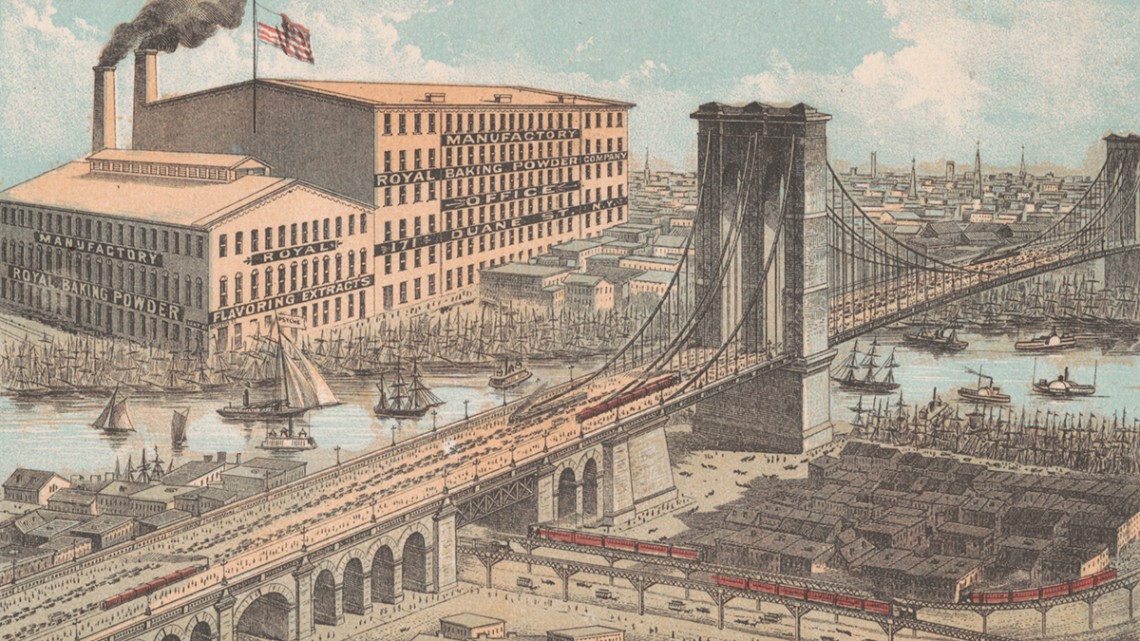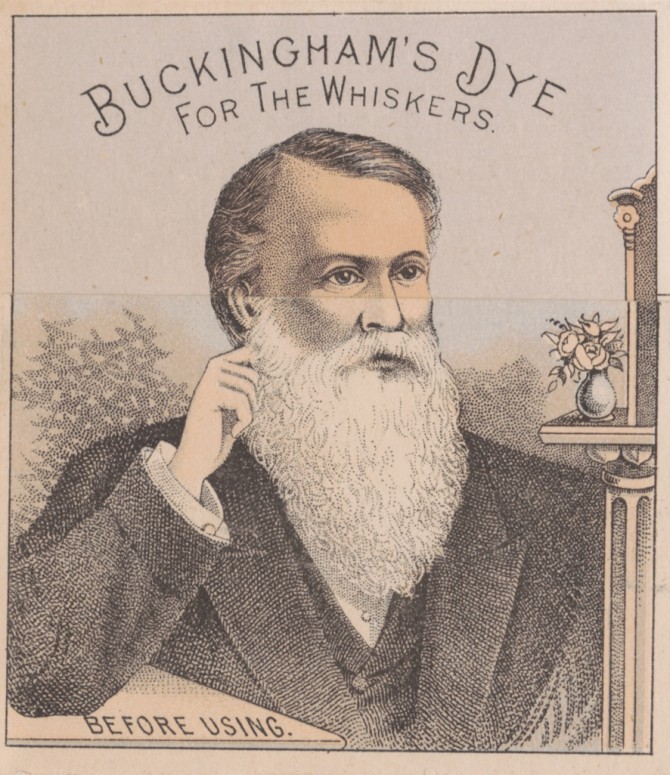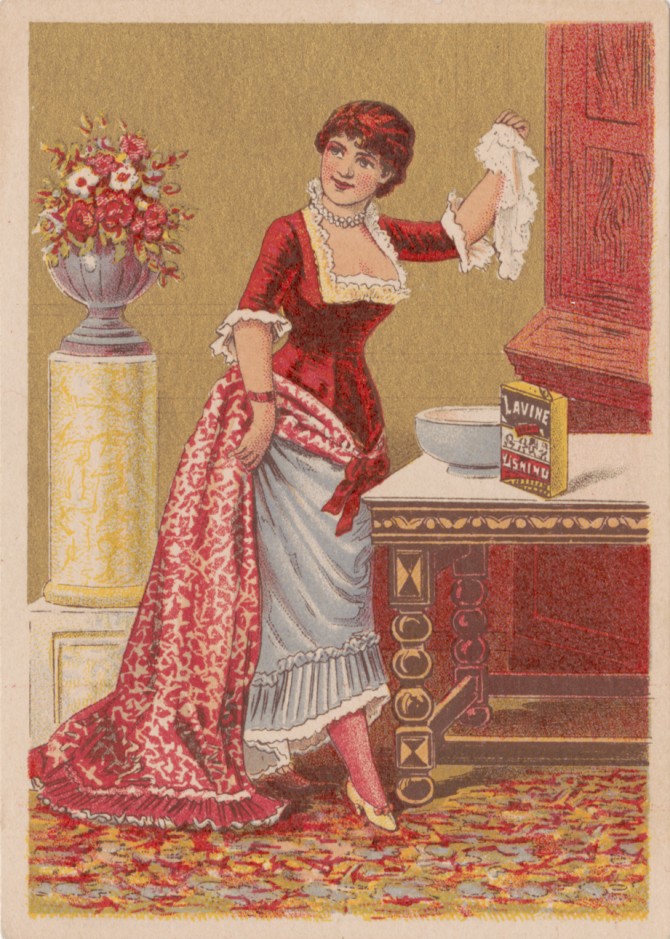
An illustrated trading card of the “Great Bridge” – later named the Brooklyn Bridge – along with warehouses, elevated highways and railroads.
Online trade card exhibit sheds light on Victorian food and wares
By Melanie Lefkowitz
A new online exhibition from Cornell University Library offers insights into life in the Victorian era through illustrated trade cards.
These small, colorful advertisements, hawking everything from agricultural equipment to housewares, became valued novelties in an era when most printing was limited to black and white. The cards were avidly collected, traded and frequently mounted in albums, and today they provide information about the food, trends, habits and fads of the late 19th century.
Nach Waxman ’58, owner of the Manhattan bookstore Kitchen Arts and Letters, collected the cards over several decades and donated them to Cornell University Library in 2015.
“We are enormously grateful to Nach Waxman for collecting and donating this trove of important material on Victorian foodways and consumerism,” said Katherine Reagan, rare books and manuscripts curator at the library’s Division of Rare and Manuscript Collections (RMC). “Having such a large concentration of these informative advertising cards focused on food, cookery, household management and agriculture will be a boon for scholars interested in exploring numerous subjects – from the history of kitchen equipment to the history of printing.”
Waxman began collecting the trade cards in the early 1980s, shortly after he opened his bookstore, which specializes in the literature of food and drink. He quickly became hooked by the cards and the countless stories they told.
“Food doesn’t just mean cookbooks,” he said. “Food means agriculture, science, economics and social history, and one of the things I liked about the cards was the way that they reflected that breadth. Food intrudes into more areas of life than practically anything else we do.”
As the collection grew, Waxman and his wife, Maron, began thinking about what to do with it. Cornell was a natural choice – not only because it was his alma mater, but because of Cornell’s leading research in agriculture, food preparation, nutrition and the hospitality industry.
Maron Waxman said one of the things she finds fascinating about the cards is the insight they provide on how trends come and go.
“In these cards, you can see history and get a real perspective on the roots and the processes of change,” she said. “For instance, the cards show us that there used to be stove foundries in every small town or urban neighborhood, because you couldn’t move a big chunk of cast iron all that far in a horse and cart. We see how methods, jobs and even the geography of production can be transformed, perhaps even disappear, because of new thinking and new technology.”
Now preserved in RMC, the 6,500 cards in the Waxman Collection of Food and Culinary Trade Cards complements other collections on the history of food, gastronomy, cooking, agriculture and winemaking, such as the Eastern Wine and Grape Archive, the Menu Collection and rare cookery books dating to the 15th century.
Melanie Lefkowitz is staff writer, editor and social media coordinator for Cornell University Library.
Media Contact
Get Cornell news delivered right to your inbox.
Subscribe
